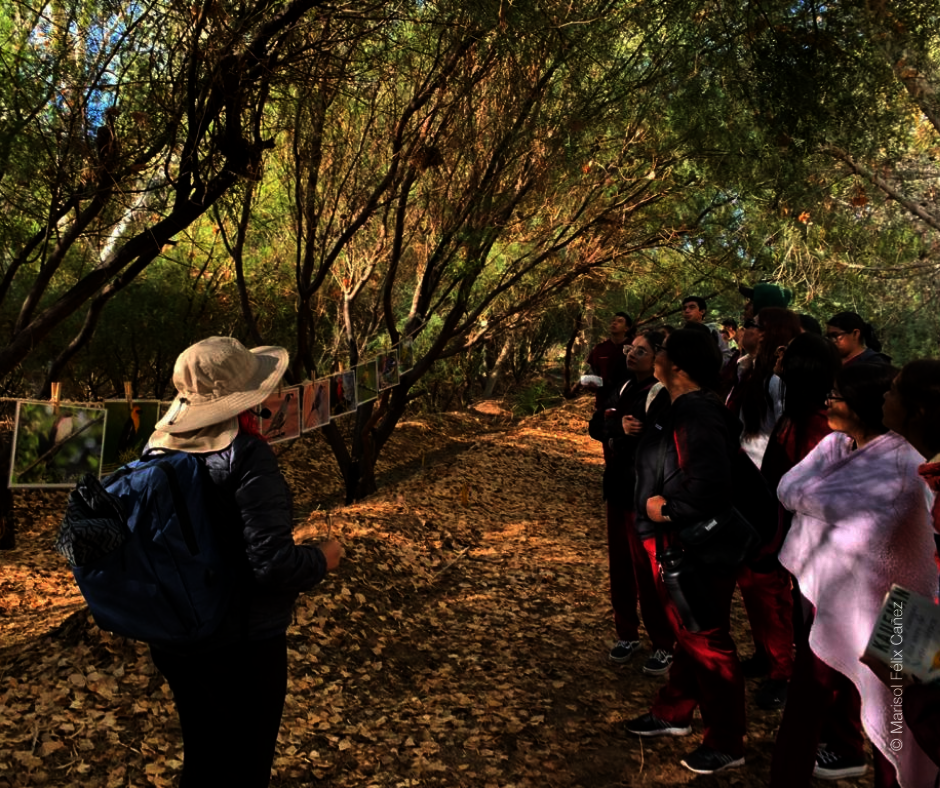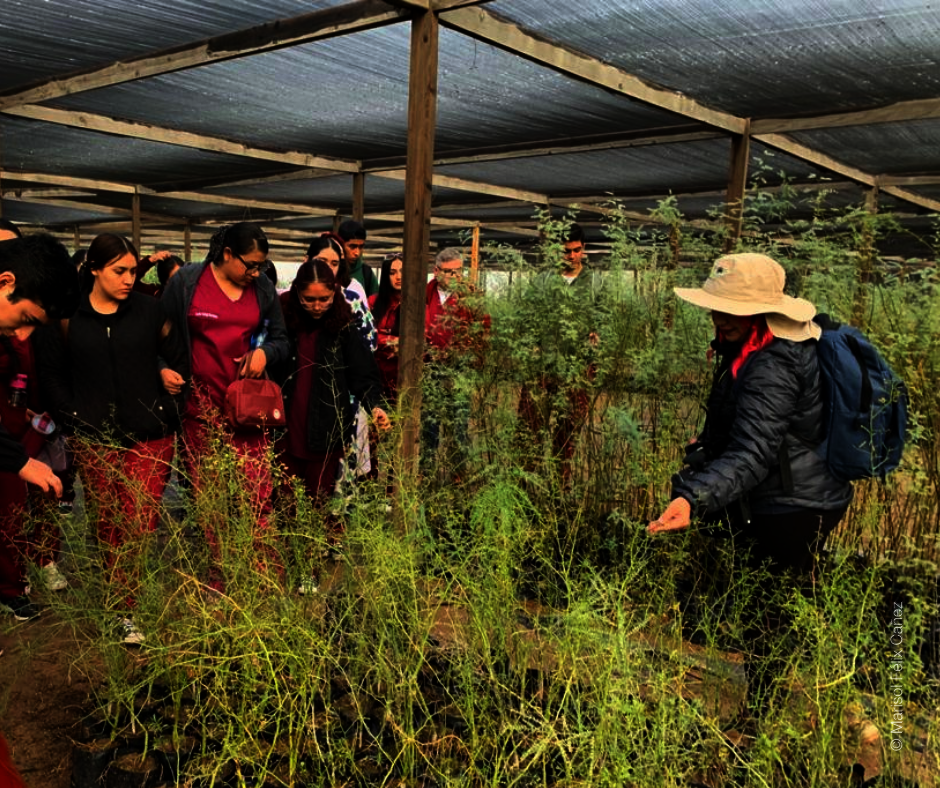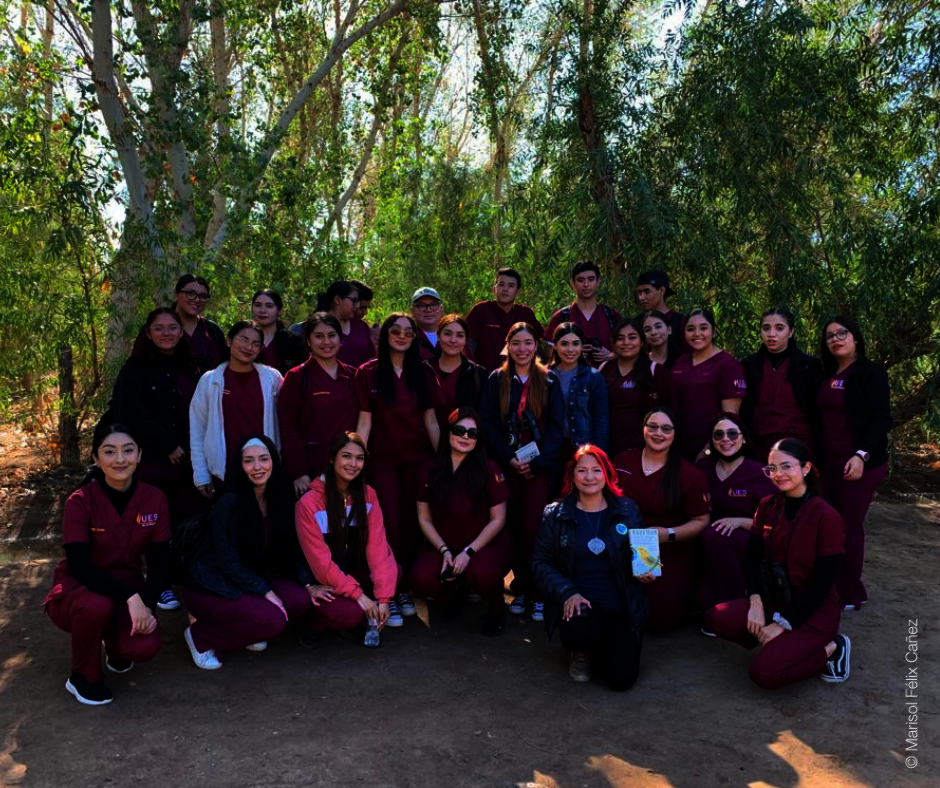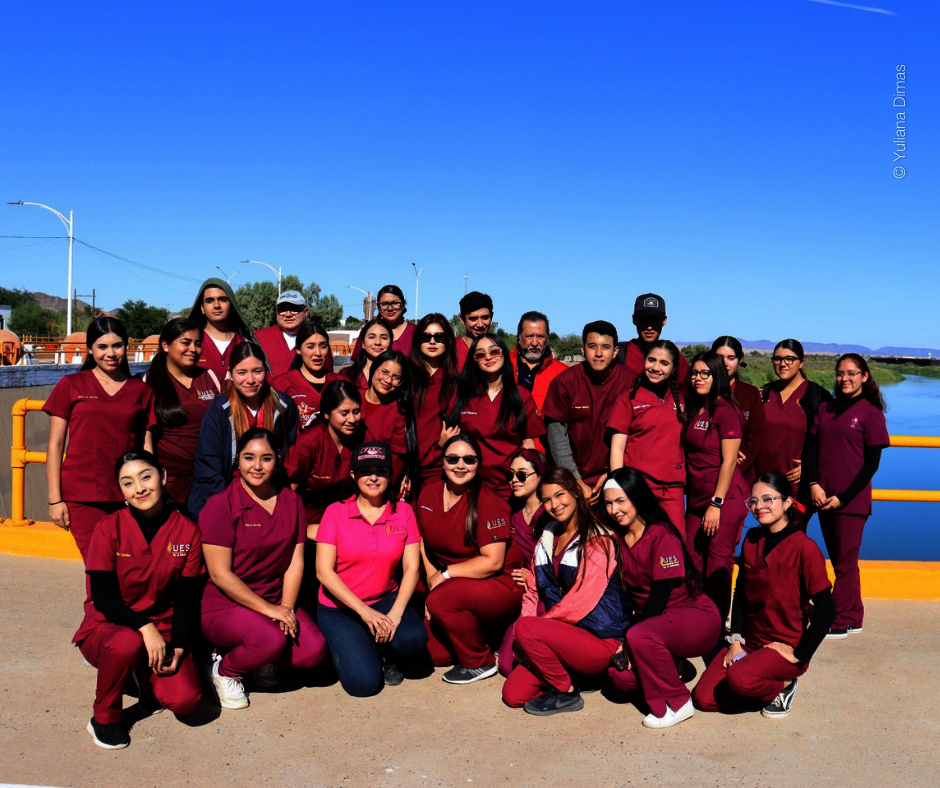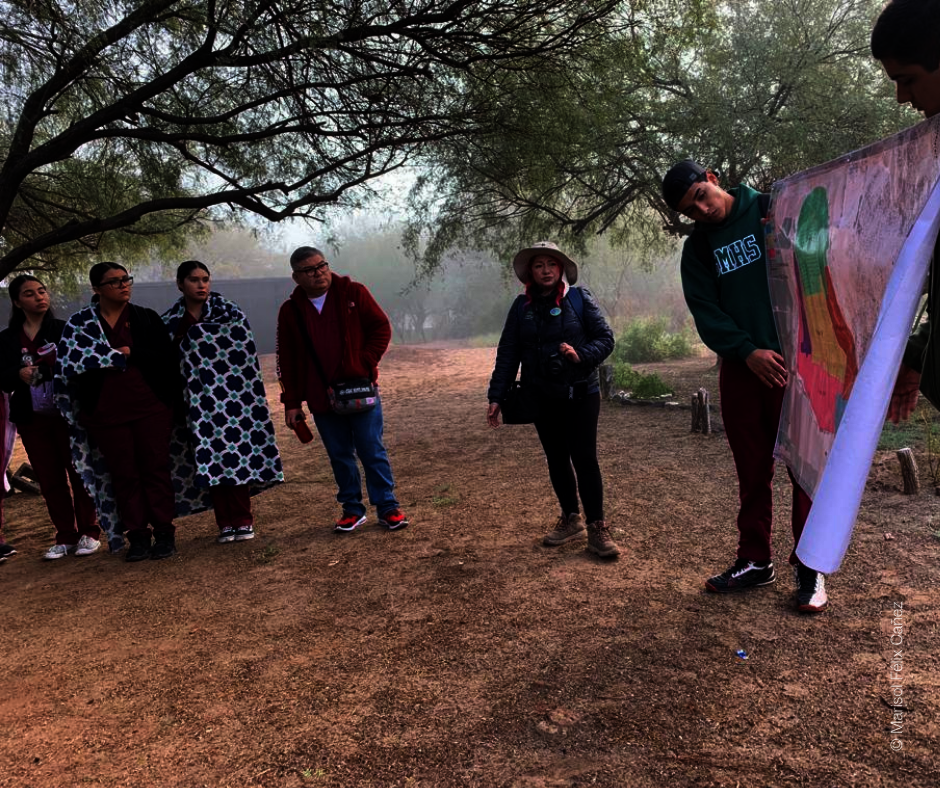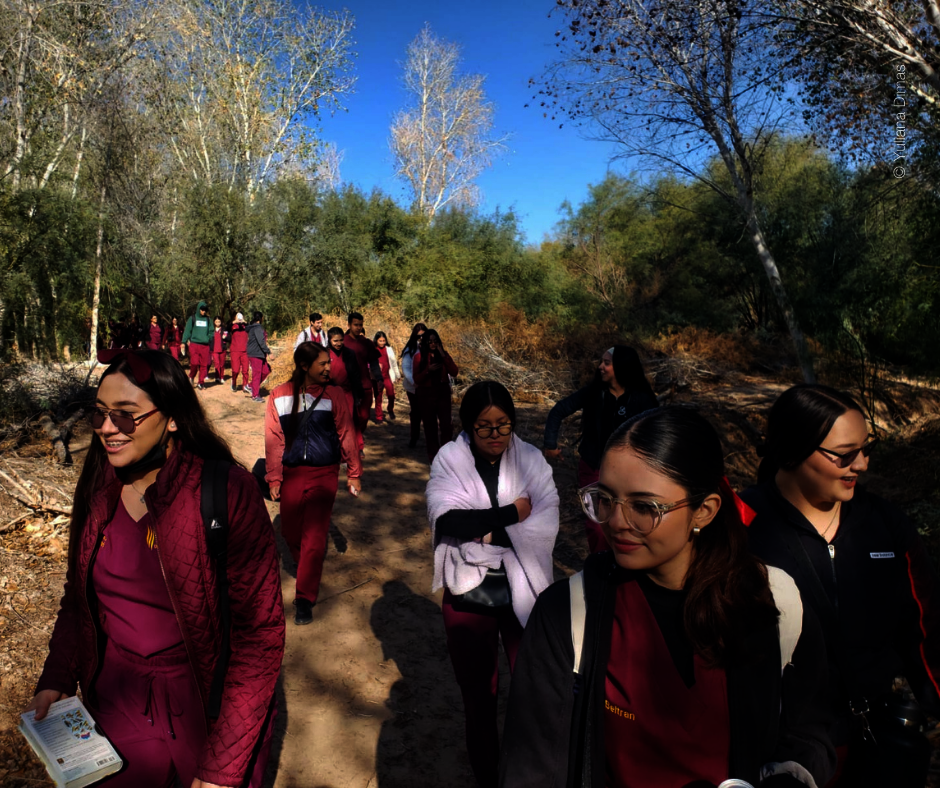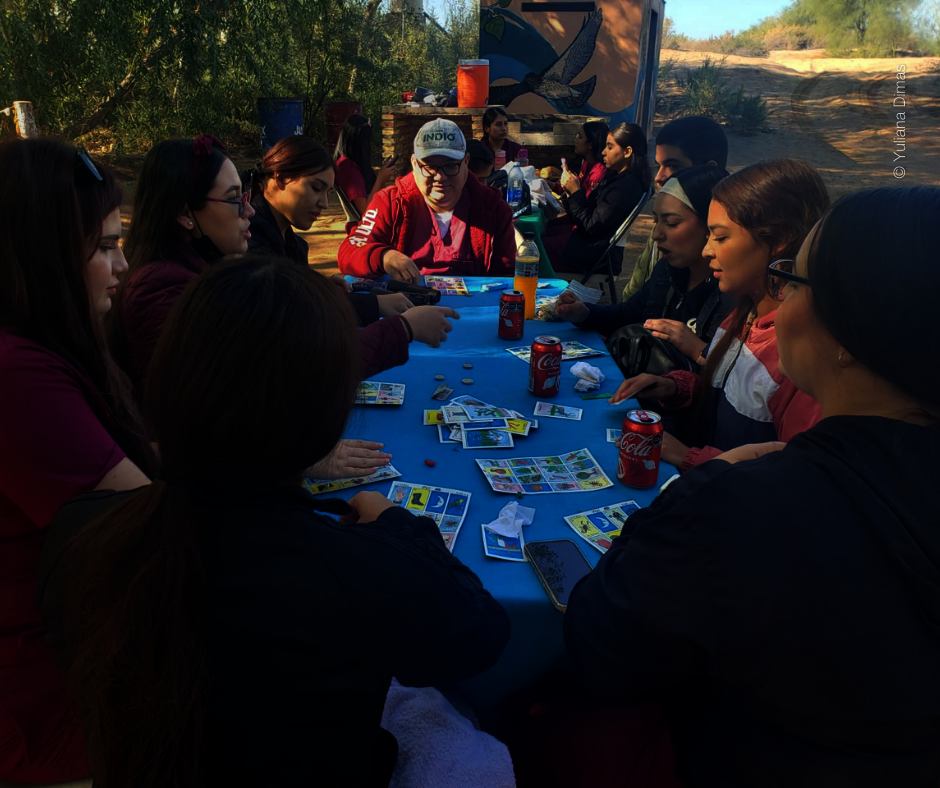By Yuliana Dimas | Project Leader
In November, 27 young students from the 5th semester of the Bachelor's Degree in Nursing and their professors Marisol FC & Alfredo LH from the State University of Sonora, San Luis Rio Colorado Campus, visited the Miguel Aleman Forest.
It was foggy, so you could not see the forest from a distance that morning. The students arrived with an excellent attitude and were motivated to live a new experience.
The visit began at the nurseries, where the community involvement staff explained how important the Colorado River is, speaking in terms of a large watershed that supplies more than 40 million people in the seven states of the American Union (Colorado, Wyoming, Utah, Nevada, Arizona, and California) and two states in Mexico (Sonora and Baja California). They also learned about the different uses of water and how it supplies mainly the valley of Mexicali and San Luis Rio Colorado, the cities of Tijuana, Rosarito, Ensenada, Mexicali, and San Luis in our country, as well as the water used in the industry.
The young people learned about the binational agreements of the Colorado River and the history of the formation of the Miguel Aleman Forest, with 122,000 trees reforested in 175.5 hectares comprising the project, this is the closest forest to their local city and as generations of previous students of Sonora State University have been part of the Reforesta San Luis program since 2014, supporting reforestation activities in Phase I, in 2016 they participated in Phase II, in 2018 in Phase III and 2019 in Phase IV of the site. They have also participated in other activities and field trips supporting Pronatura Noroeste projects.
This generation could now enjoy a forest. Students toured the nursery and learned about the importance of reforesting with trees of the Sonoran desert for its easy maintenance and low water consumption.
Students identified a Mezquite Tornillo (Strombocarpa pubescens) by exploring the pod.
The tour inside the nurseries helped them to learn about the characteristics of each native plant and the differences in the leaves, thorns, pods, and stems of the palo verde amarillo, azul, brea, and Mexicano.
We taught Students to use the bird field guide to identify resident birds in the Miguel Alemán Forest. They preferred the songbirds because of their large shades of yellow feathers.
We took a 1-kilometer walk on the native plant trail where students can identify plants such as the cachanilla. Then
we had a refreshment break, and afterward, we enjoyed traditional Mexican games.
After visiting the Miguel Aleman forest, we continued our tour to the town of Los Algodones, Baja California, to see the Morelos Diversion Dam, which receives the Colorado River water supply that corresponds to Mexico to supply the needs of the population of the region and agriculture in the Mexicali valley (Baja California) and San Luis Río Colorado (Sonora)
Juan R.M., from the International Boundary and Water Commission, gave us a tour to explain the International Water Treaty between Mexico and the United States and how CILA monitors and enforces international agreements in coordination with its counterpart, the U.S. section, the International Boundary and Water Commission.
The objective of this tour was for the new generations to learn about the management and distribution of Colorado River water in Mexico and to understand the environmental problems we face through the large part of the ecosystem.
However, the restoration efforts of the Colorado River in Mexico seek to reverse these effects. Young people must take action against climate change by promoting the creation of more green areas in cities and supporting efforts to maintain the restored forest in Mexico.
Links:
Project reports on GlobalGiving are posted directly to globalgiving.org by Project Leaders as they are completed, generally every 3-4 months. To protect the integrity of these documents, GlobalGiving does not alter them; therefore you may find some language or formatting issues.
If you donate to this project or have donated to this project, you can receive an email when this project posts a report. You can also subscribe for reports without donating.
Support this important cause by creating a personalized fundraising page.
Start a Fundraiser